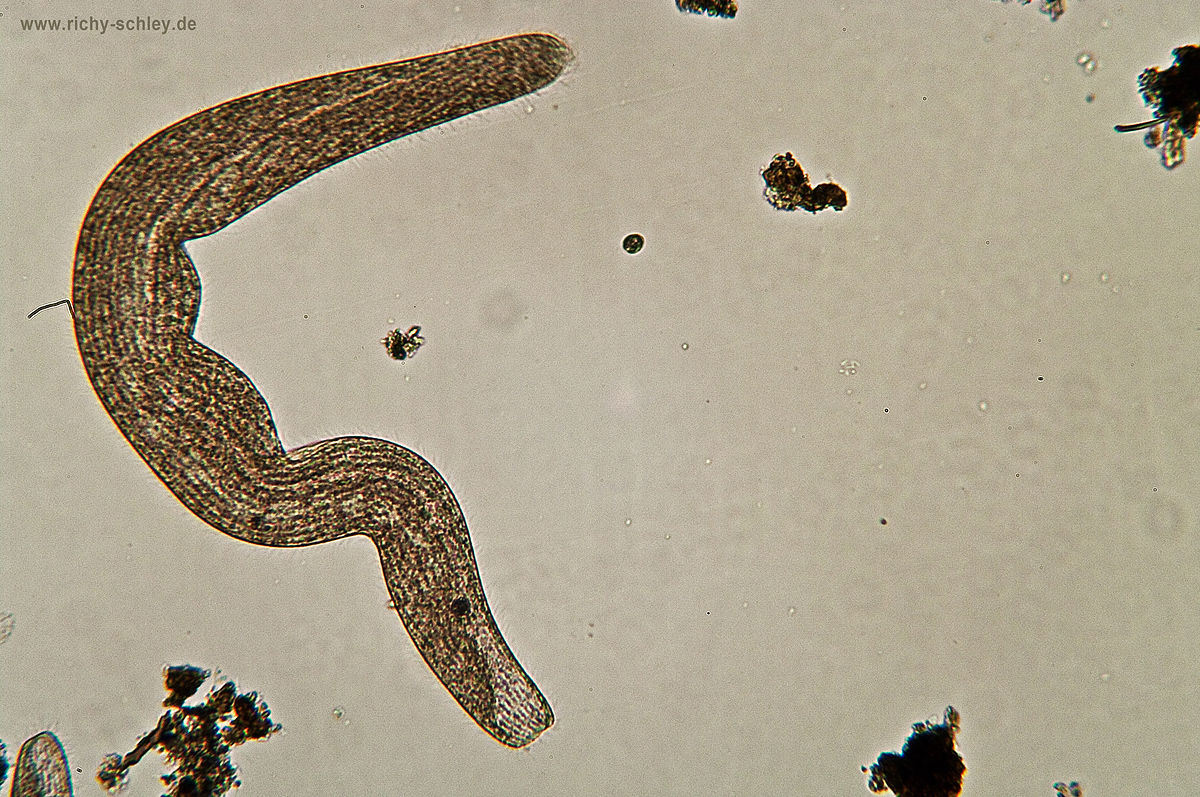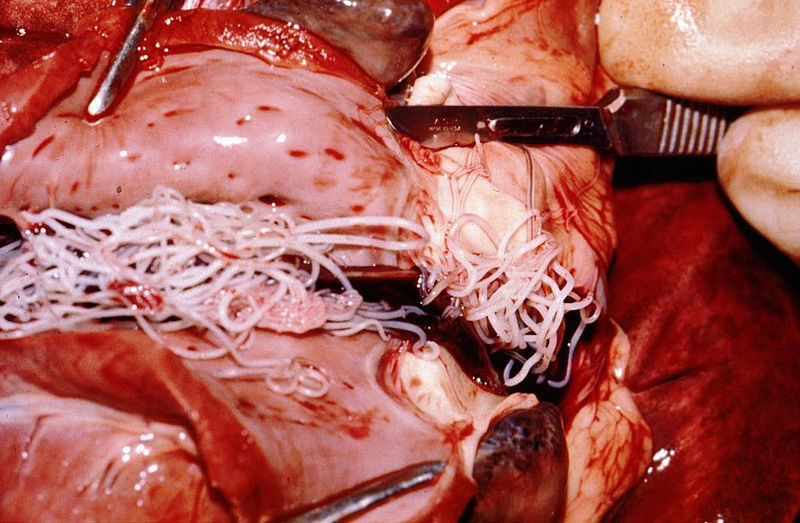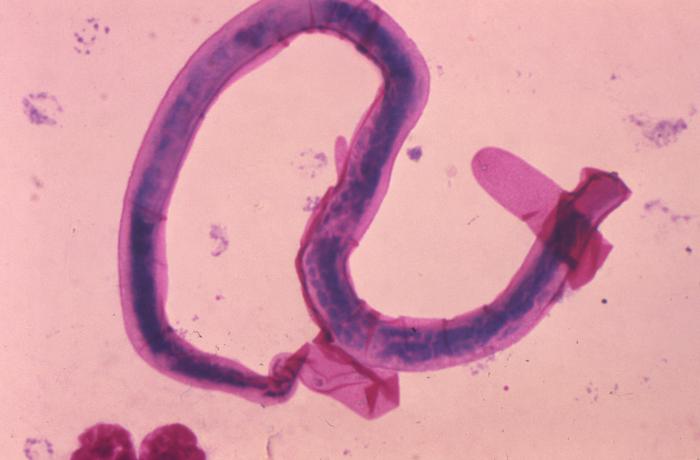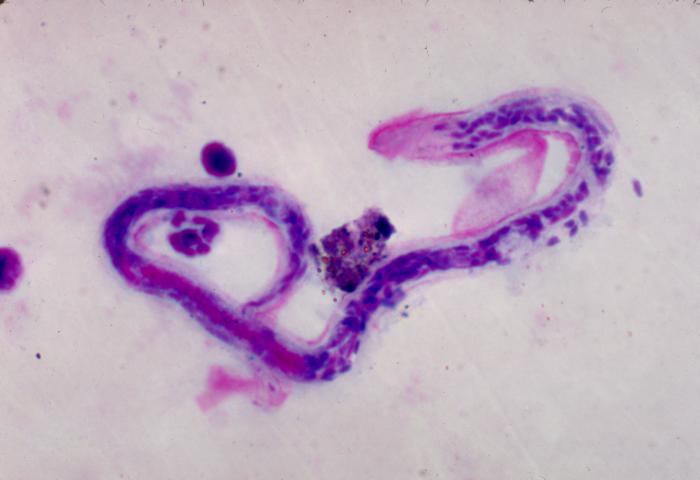Classification
Eukarya: B. malayi is classified into the Domain Eukarya because they are multicellular eukaryotic organisms, having a true nucleus, and membrane-bound organelles in their cells. They also fall into this category because their cell division occurs through mitosis (Domain Eukarya). Other organisms that fall into this classification include humans, fungi, cats, etc.

Animalia:
Characteristics of Kingdom Animalia include heterotrophism.
Brugia malayi feed on blood and lymph tissues of their
hosts, which is why they are heterotrophic. Other synapomorphies of this
Kingdom are sexual reproduction and triploblasty (Kingdom Animalia).
Filarial nematode worms are triploblastic because they have a mesoderm for
specialized cell functions. Kingdom Animalia includes a broad group of
organisms with the clever
orangutan also present!
Nematoda:
Phylum Nematoda includes all roundworms. These roundworms have a
cylindrical body with a tapered head and a blunt/rounded tail.
The worms have a complete digestive tract with a separate mouth
and anus (Phylum Nematoda). The infamous
human hookworm is also a roundworm!

Secernentea: Roundworms with the sensory organs
called papillae are in the Class Secernentea (Secernentea 2013). Papillae
can be used to identify the type of nematodes by the amount and location of the
papillae (Dictionary of Tropical Medicine). Those in this class also lack a circulatory and
respiratory system.
Spirurida: Brugia malayi fall into Order Spirurida, which means they lack
lips, but have a toothlike projection on either side of their
mouth (Nematodes 2009). These toothlike projections help them
feed on blood and lymph in their hosts. Another awesome
organism that falls under Spirurida is the
Dog Heartworm!

Onchocercidae: Family onchocercidae includes parasites. The
parasites in this group can be devastating to human health (Onchocercidae
2013). The tolls the parasites take are both emotional and physical.
Brugia:
Those in the Genus Brugia cause enlarged lymph nodes (Richardson
and Krause 2003). Two of three species that can cause filariasis
are included in this genus: Brugia malayi and Brugia timori (WHO
2014). Brugia timori causes a similar filariasis in its hosts.

Brugia malayi: B. malayi lives in the
human lymphatic system and causes elephantiasis. This disease can affect
both mental and physical health. B. malayi infects millions, and
many are unaware they even have the parasite living inside them.

Brugia malayi means “filariasis malayan” or Malayan filariasis.
This name comes from the widespread of the filariasis in
Malaysia (Atlas 2003). If you don’t already know, Malaysia is in Southeast
Asia where about 65% of all cases of lymphatic filariasis are
found, making “Malayan filariasis” an appropriate name.
B. malayi is also commonly known as a parasitic nematode.

In the first phylogenetic tree, we see that B. malayi is
classified into Kingdom Animalia. This is because it is
multicellular, eukaryotic, heterotrophic, has specialized cells,
and sexually reproduces. Kingdom Animalia sprouts from major
clade Opisthokonta. Opisthokonta not only holds Animals, but
also Fungi and Choanoflagellates. Animals are more closely
related to Choanoflagellates because both taxa’s cells have
flagella at some point throughout development.
 In the second tree, we see that Phylum Nematoda is next after
Kingdom Animalia. Brugia malayi are classified here because they
are nematodes. Nematodes are cylindrical, have a tapered tail,
and appear to have no head. They can be either parasitic or
free-living, although B. malayi is parasitic. Nematodes
are most closely related to Arthropods. Both of these phyla have an external
covering that they must molt every so often.
In the second tree, we see that Phylum Nematoda is next after
Kingdom Animalia. Brugia malayi are classified here because they
are nematodes. Nematodes are cylindrical, have a tapered tail,
and appear to have no head. They can be either parasitic or
free-living, although B. malayi is parasitic. Nematodes
are most closely related to Arthropods. Both of these phyla have an external
covering that they must molt every so often.
In the third and final tree, we notice that Class Secernentea follows Phylum Nematoda. Secernentea then can be broken down into 9 different orders. B. malayi subsequently falls into Order Spirurida, due to the lack of lips and toothlike projections on the sides of their mouth. Come learn more about where the lipless B. malayi resides and lives!
*The first two Phylogenies created here were roughly based on the one created by Kali Kramolis in 2011.
